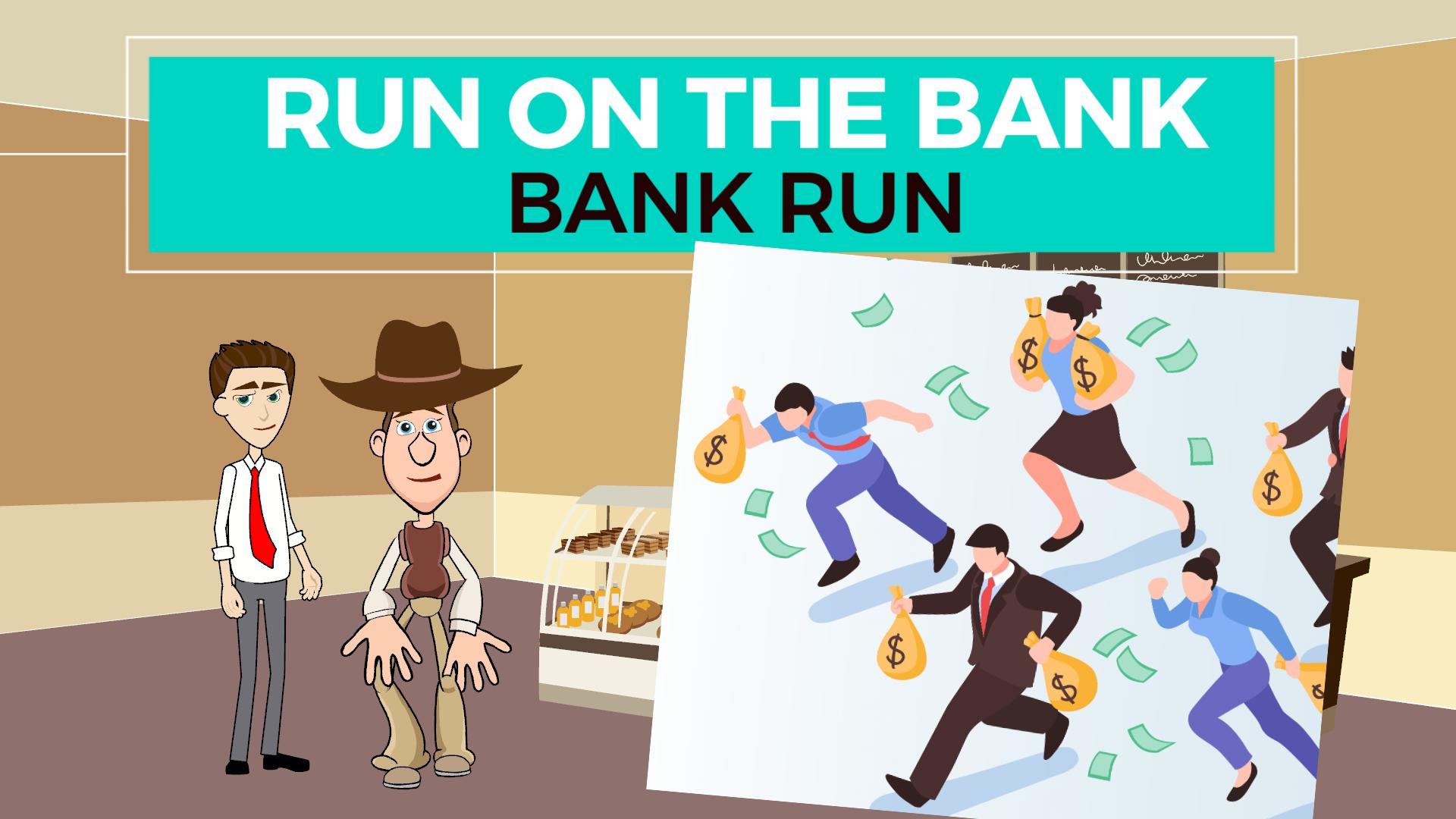Introduction to Run on the Bank for Kids and Teens
This video explains the concept of a bank run in a simple, concise way for kids and beginners. It could be used by kids & teens to learn about a run on the bank, or used as a money & personal finance resource by parents and teachers as part of a Financial Literacy course or K-12 curriculum.

Suitable for students from grade levels:
- Kindergarten
- Elementary School
- Middle School
- High School
The topics covered are:
- What is a run on the bank
- What happens if there is a run on the bank
- Examples of a run on the bank
- Will you lose your money if there is a run on your bank and it fails
What is a bank run? What does a run on a bank mean?

A bank run definition: run on the bank, also called a bank run, is when a large number of depositors try to withdraw their money at the same time from a bank or other financial institution.
This usually happens because the depositors worry that the bank may fail and they may lose their money, causing them to panic.
Ironically, this is what might cause a bank to run out of money!
What happens if there is a run on the bank?
Banks usually have only a small percentage of deposits available as cash. If the money withdrawn is less than the cash held by the bank, it’s not a problem.
However, if more money is withdrawn than the available cash, it can have catastrophic consequences.
To pay the depositors, the bank will be forced to sell assets – often at a much lower price than they were bought for. This can lead to a decrease in the bank’s financial integrity and can even lead to bankruptcy!
A modern day bank run, also called silent bank run, is even more dangerous, since moving money from accounts doesn’t even require a visit to the bank.
It can be done within seconds using computers or mobile phones via ACH or wire transfers.
Can you give me some examples of a bank run?

There have been many bank runs throughout history.
Thousands of bank runs after the stock market crash of 1929 is one of the key factors that caused the Great Depression.
The collapse of Washington Mutual during the Great Recession of 2008 was the largest bank failure in the US.
The most prominent example in recent times is the collapse of Silicon Valley Bank in March 2023.
Here, depositors withdrew $42 Billion in a single day!
Will I lose my money if there is a run on my bank and it fails?
During some of the first bank runs in the 1930s, many people lost all their deposits. To prevent this from happening in the future, the Federal Deposit Insurance Corporation or FDIC was created in 1933.
Today, if your money is in an FDIC insured bank account, it is 100% safe up to $250,000 – no matter what happens.
Download Transcript: Ideal for Use by Teachers in their Lesson Plan to Teach Kids & Teens

